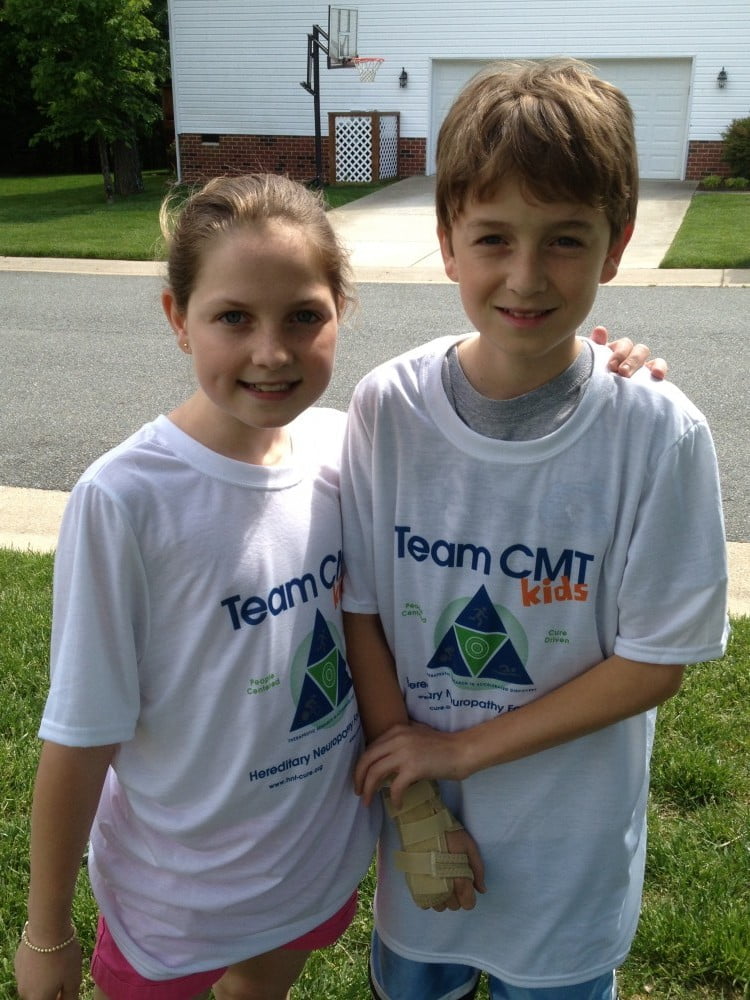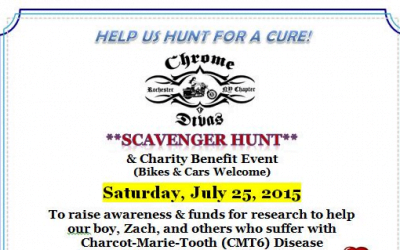 We at HNF are so proud of the accomplishments of those scientists we fund and are asking you to please continue to support our efforts. Our Therapeutic Research In Accelerated Discovery (TRIAD) program is a proven collaborative model in the drug discovery process. Through partnerships with leaders in academia, government and industry, we will be part of the first Phase 3 trial from Pharnext, an advanced clinical stage biopharmaceutical company for the most common form of CMT, CMT1A. We are also committed to our continued strategy for developing treatments for CMT2A. For example, our recent funding to evaluate compounds in the zebrafish model is a giant step toward drug discovery. We are also embarking on other forms of hereditary neuropathies to ultimately accomplish the same goals of getting treatments to patients as soon as possible. Our strategy is to put donors’ dollars to work funding the scientists who are doing translational research which will move their ideas to treatments that can ultimately be tested in the clinic. This is not an overnight process, which some organizations would like you to believe; we have to be prepared to invest for the long-haul. It usually takes well over a decade to go from a discovery in the laboratory to something that can go to the FDA for their approval. There are no guarantees. If a scientist finds a promising compound in a screen, the odds are stacked against that molecule ever becoming a drug that a patient takes, and it takes millions of dollars to bring a drug to market. Although HNF is a relatively small organization, we do know this disease better than most drug companies, allowing us to make astute investments. With the help of our Scientific Advisory Board and industry advisors, we look to fund projects that are important and may have been missed by others. You will notice we have a diversified portfolio of projects in different stages in the same way that many of you likely diversify your investments. In 2014 alone we have announced major collaborations with Pharnext and the Biopontis Alliance for Rare Diseases. These partnerships will help develop a pipeline to bring early and late stage treatments to clinical trials for CMT1A. We have also funded Dr. Andy Grierson working on the CMT2A zebrafish model and Dr. Lucia Notterpek working on microRNA for CMT1A. As always we continue to push forward, and following our Scientific Advisory Board meeting in mid-November, we will have new goals to pursue as well. We will report on these in the next issue. As the holiday season approaches it is usually a time to reflect on the past year and to position HNF for the years ahead. Our goal to fund key projects to bring treatments to the patient is a marathon, not a sprint, and we need your continued support to see us to that finish line! http://weblink.donorperfect.com/HNFDONATE
We at HNF are so proud of the accomplishments of those scientists we fund and are asking you to please continue to support our efforts. Our Therapeutic Research In Accelerated Discovery (TRIAD) program is a proven collaborative model in the drug discovery process. Through partnerships with leaders in academia, government and industry, we will be part of the first Phase 3 trial from Pharnext, an advanced clinical stage biopharmaceutical company for the most common form of CMT, CMT1A. We are also committed to our continued strategy for developing treatments for CMT2A. For example, our recent funding to evaluate compounds in the zebrafish model is a giant step toward drug discovery. We are also embarking on other forms of hereditary neuropathies to ultimately accomplish the same goals of getting treatments to patients as soon as possible. Our strategy is to put donors’ dollars to work funding the scientists who are doing translational research which will move their ideas to treatments that can ultimately be tested in the clinic. This is not an overnight process, which some organizations would like you to believe; we have to be prepared to invest for the long-haul. It usually takes well over a decade to go from a discovery in the laboratory to something that can go to the FDA for their approval. There are no guarantees. If a scientist finds a promising compound in a screen, the odds are stacked against that molecule ever becoming a drug that a patient takes, and it takes millions of dollars to bring a drug to market. Although HNF is a relatively small organization, we do know this disease better than most drug companies, allowing us to make astute investments. With the help of our Scientific Advisory Board and industry advisors, we look to fund projects that are important and may have been missed by others. You will notice we have a diversified portfolio of projects in different stages in the same way that many of you likely diversify your investments. In 2014 alone we have announced major collaborations with Pharnext and the Biopontis Alliance for Rare Diseases. These partnerships will help develop a pipeline to bring early and late stage treatments to clinical trials for CMT1A. We have also funded Dr. Andy Grierson working on the CMT2A zebrafish model and Dr. Lucia Notterpek working on microRNA for CMT1A. As always we continue to push forward, and following our Scientific Advisory Board meeting in mid-November, we will have new goals to pursue as well. We will report on these in the next issue. As the holiday season approaches it is usually a time to reflect on the past year and to position HNF for the years ahead. Our goal to fund key projects to bring treatments to the patient is a marathon, not a sprint, and we need your continued support to see us to that finish line! http://weblink.donorperfect.com/HNFDONATE
Finding Experts Health Care Providers for Charcot-Marie-Tooth
We are creating an innovative HCP Directory which provides these clinicians with additional tools to care for their patients.





0 Comments